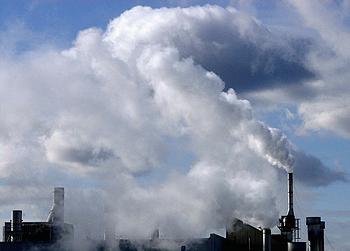
LAXENBURG, Austria, March 4, 2016 (ENS) – Humanity must hold itself to a strict carbon budget – emitting even less greenhouse gases than earlier estimated – if we want to keep planetary warming to less than 2°Celsius above pre-industrial temperatures, a new study finds.
The 2°C target was adopted as a goal by the leaders of 196 countries at the United Nations’s 2015 Paris climate conference, COP21. They view it as a safe limit to prevent the most dangerous impacts of climate change.

Published in the current issue of the journal “Nature Climate Change,” the study proposes a future carbon budget of 590-1,240 billion tons of carbon dioxide (CO2) from the year 2015 onwards.
The study finds that the available CO2 budget is on the low end of the spectrum compared to previous estimates, which ranged from 590 to 2,390 billion tons for the same time period.
The analysts, from the International Institute for Applied Systems Analysis (IIASA) in Laxenburg, wanted to understand these differences and provide clarity on the issue for policymakers and the public.
“In order to have a reasonable chance of keeping global warming below 2°C, we can only emit a certain amount of carbon dioxide, ever. That’s our carbon budget,” says IIASA researcher Dr. Joeri Rogelj, who led the study.
“We have figured out that this budget is at the low end of what studies indicated before, and if we don’t start reducing our emissions immediately, we will blow it in a few decades,” he warns sternly.
The study shows that in some cases scientists have been overestimating the available carbon budget by 50 to over 200 percent.

“At the high end, this is a difference of more than 1,000 billion tons of carbon dioxide,” says Rogelj, who works to connect insights from geoscience with energy modelling and climate policy.
“We now better understand the carbon budget for keeping global warming below 2 degrees,” he said. “This carbon budget is very important to know because it defines how much carbon dioxide we are allowed to release into the atmosphere, ever.”
But while many scientists have endorsed it, the 2°Celsius target is “political rather than scientific,” the IIASA researchers say, and they recognize that climate risk is perceived differently in different countries.
The world leaders also recognized these factors, so they decided in Paris to pursue efforts to keep global warming to 1.5°Celsius.
Efforts to address climate change should focus on tangible actions that reduce emissions urgently, rather than be stalled by arguments about where to end up, argue Rogelj and another set of colleagues in a perspective piece that focuses on the 2°C target published in the journal “Nature Geoscience” in December.
The authors point out that the world is currently on track to hit 3 to 5°C of warming by 2100.
The next step – translating temperature targets into clear emissions guidelines – is also a complicated task.
The analysts aim to develop new methods that will provide clarity to policymakers, and link this research to the United Nations’ Sustainable Development Goals, adopted in September 2015.
Copyright Environment News Service (ENS) 2016. All rights reserved.
© 2016, Environment News Service. All rights reserved. Content may be quoted only with proper attribution and a direct link to the original article. Full reproduction is prohibited.
